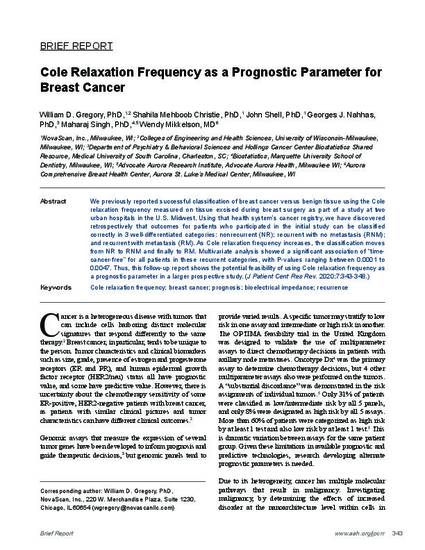
- Cole relaxation frequency,
- breast cancer,
- prognosis,
- bioelectrical impedance,
- recurrence
We previously reported successful classification of breast cancer versus benign tissue using the Cole relaxation frequency measured on tissue excised during breast surgery as part of a study at two urban hospitals in the U.S. Midwest. Using that health system’s cancer registry, we have discovered retrospectively that outcomes for patients who participated in the initial study can be classified correctly in 3 well-differentiated categories: nonrecurrent (NR); recurrent with no metastasis (RNM); and recurrent with metastasis (RM). As Cole relaxation frequency increases, the classification moves from NR to RNM and finally to RM. Multivariate analysis showed a significant association of “time-cancer-free” for all patients in these recurrent categories, with P-values ranging between 0.0001 to 0.0047. Thus, this follow-up report shows the potential feasibility of using Cole relaxation frequency as a prognostic parameter in a larger prospective study.
Gregory WD, Christie SC, Shell J, Nahhas GJ, Singh M, Mikkelson W. Cole relaxation frequency as a prognostic parameter for breast cancer. J Patient Cent Res Rev. 2020;7:343-8. doi: 10.17294/2330-0698.1794
